This pub is closed permanently. Your nearest Wetherspoon pub: The Moon on the Hill
The Grapes has been a prominent feature of the north end of High Street for 140 years. Situated on the corner of Benhill Avenue, it was built by Charles Martin in c1867, on the site of a coach house and stables. Originally an hotel, The Grapes has changed hands many times. In c1970, the property was considerably extended. More recently, it was renamed The Corner House and then Pitchers Sports Bar, but has since reverted to its original name.
Framed photographs and text about the history of the building.
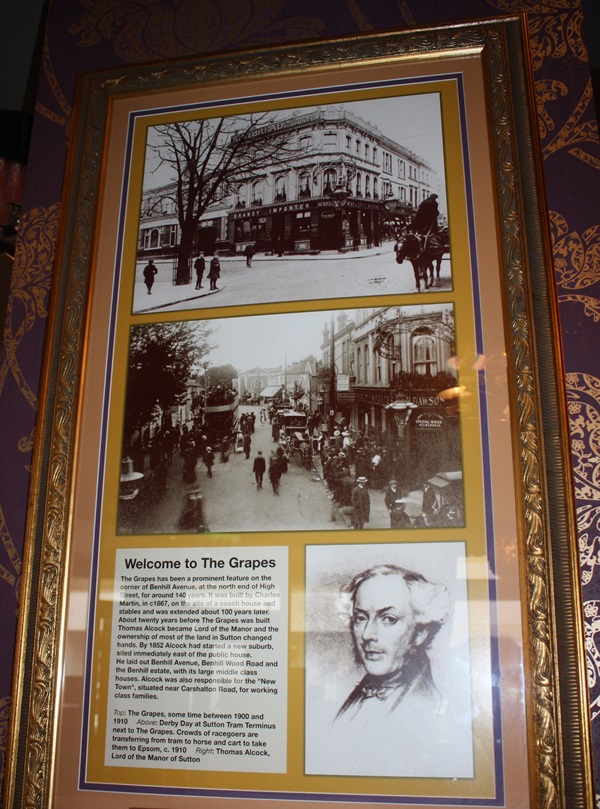
The text reads: The Grapes has been a prominent feature on the corner of Benhill Avenue, at the north end of High Street, for around 140 years. It was built by Charles martin, in c1867, on the site of a coach house and stables was extended about 100 years later. About twenty years before The Grapes was built, Thomas Alcock because Lord of the Manor and the ownership of most of the land in Sutton changed hands. By 1852 Alcock had started a new suburb, sited immediately east of the public house. He laid out Benhill Avenue, Benhill Wood Road and the Benhill estate, with its large middle class houses. Alcock was also responsible for the “New Town”, situated near Carshalton Road, for working class families.
Framed old photographs and text about Graham Sutherland.
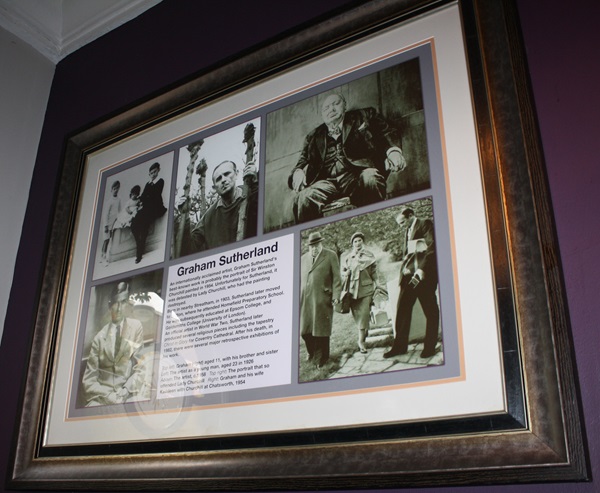
The text reads: In internationally acclaimed artist, Graham Sutherland’s best- known work is probably the portrait of Sir Winston Churchill painted in 1954. Unfortunately for Sutherland, it was detested by Lady Churchill, who had the painting destroyed. Born in nearby Streatham, in 1903, Sutherland later moved to Sutton, where he attended Homefield Preparatory School. He was subsequently educated at Epsom College, and Goldsmith College (University of London). An official artist in World War Two, Sutherland later produced several religious pieces including the tapestry Christ in Glory for Coventry cathedral. After his death, in 1892, there were several major retrospective exhibitions of his work.
Framed photographs and text about Harry Tate.
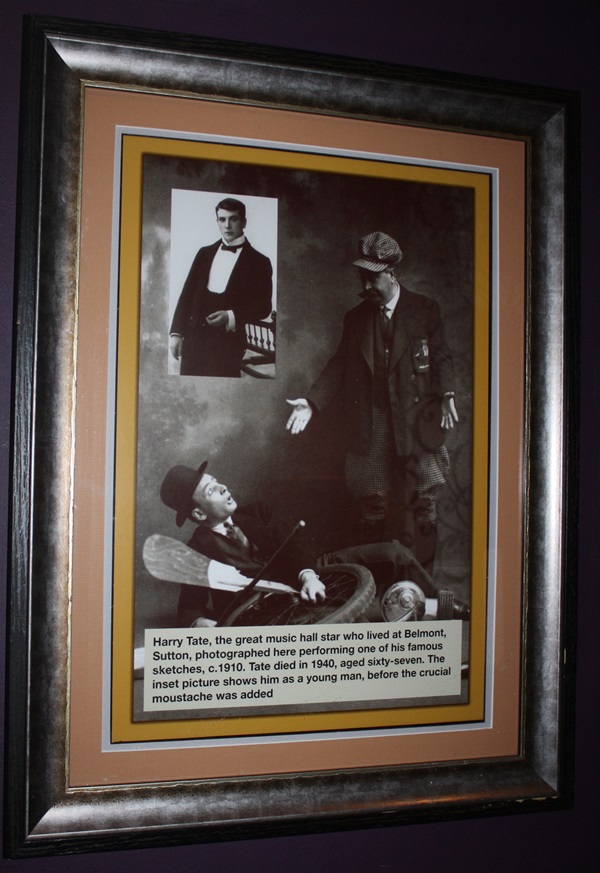
The text reads: Harry Tate, the great music hall star who lived at Belmont, Sutton photographed here performing one of his famous sketches, c1910. Tate died in 1940, aged sixty-seven. The inset picture shows him as a young man, before the crucial moustache was added.
Framed photographs and text about Jack Warner.
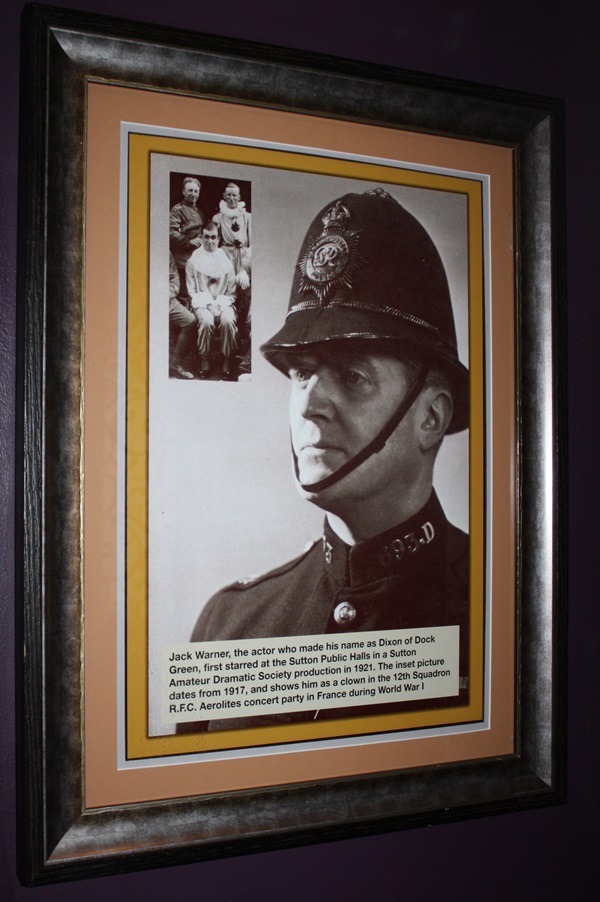
The text reads: Jack Warner, the actor who made his name as Dixon of Dock Green, first starred at the Sutton Public Halls in a Sutton Amateur Dramatic Society production in 1921. The inset picture dates from 1917, and shows him as a clown in the 12th Squadron R.F.C. Aerolites concert party in France during World War 1.
Framed photographs of Benhill Street and High Street.

The text reads: The corner of Benhill Street, 1908. High Street at the junction of Greenford Road, 1910.
Framed paintings of Westmead Farmland and Butter Hill, Carshalton.
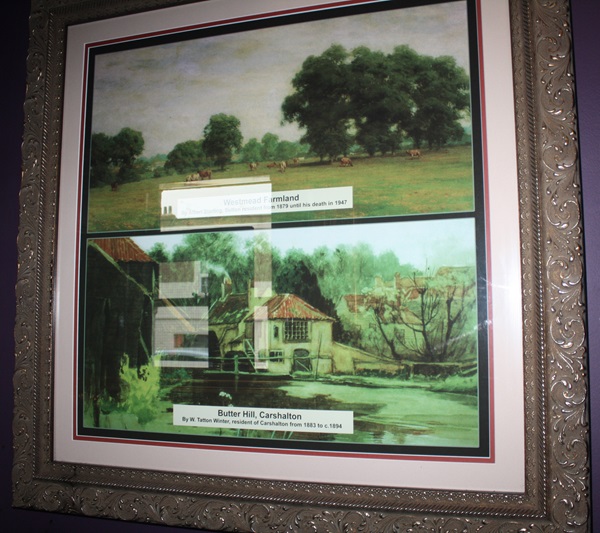
The text read: Westmead Farmland by Albert Starling, Sutton resident from 1879 until his death in 1947. Butter Hill, Carshalton by W. Tatton Winter, resident of Carshalton from 1883 to c1894.
A framed painting of The People’s Store.

The text reads: The People’s Store (Sutton’s first Woolworths) By Leonard J. Fuller, who lived in Sutton from 1908 until 1938, when he moved to St Ives.
A framed photograph of The Cock Hotel.
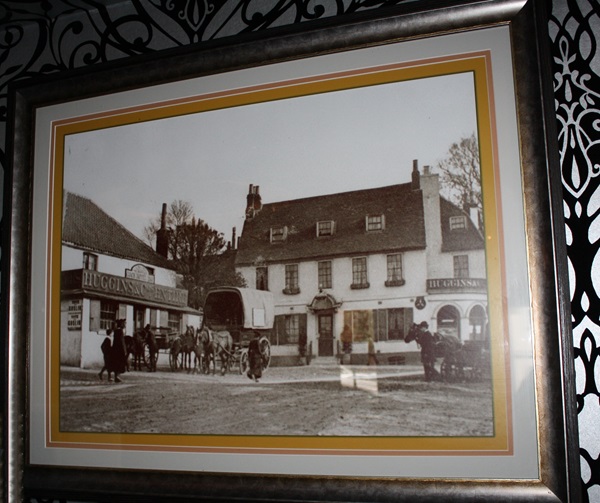
A framed photograph of High Street, in 1865.
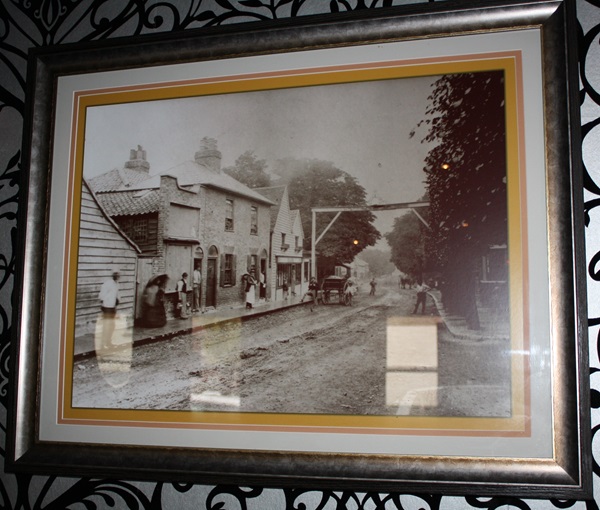
A piece of text about The Cock Hotel and The Greyhound.

The text reads: In 1755 Sutton high Street became part of the newly privatised coaching rote between London and Brighton. The tolls charged to use the new road were collected at the tollgates, which stood outside the Cock hotel until 1863. The Cock Hotel was a famous inn. It’s earliest recorded landlord- Jon Kellick- died in 1639. A new, much grander, Cock Hotel was built in 1896. It served Sutton until 1961, when it was replaced by an office block called Old inn House. Sutton’s other well-known coaching inn- The Greyhound Hotel- also hired out horses to help heavily loaded vehicles up the steep High Street incline. The site of The Greyhound is now covered by marks and Spencer.
An historical milestone.

Whitehall and the Royal Exchange.
External photo of the building - front.
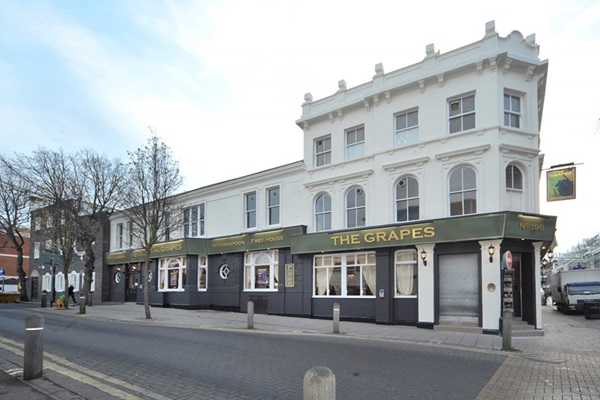
If you have information on the history of this pub, then we’d like you to share it with us. Please e-mail all information to: pubhistories@jdwetherspoon.co.uk